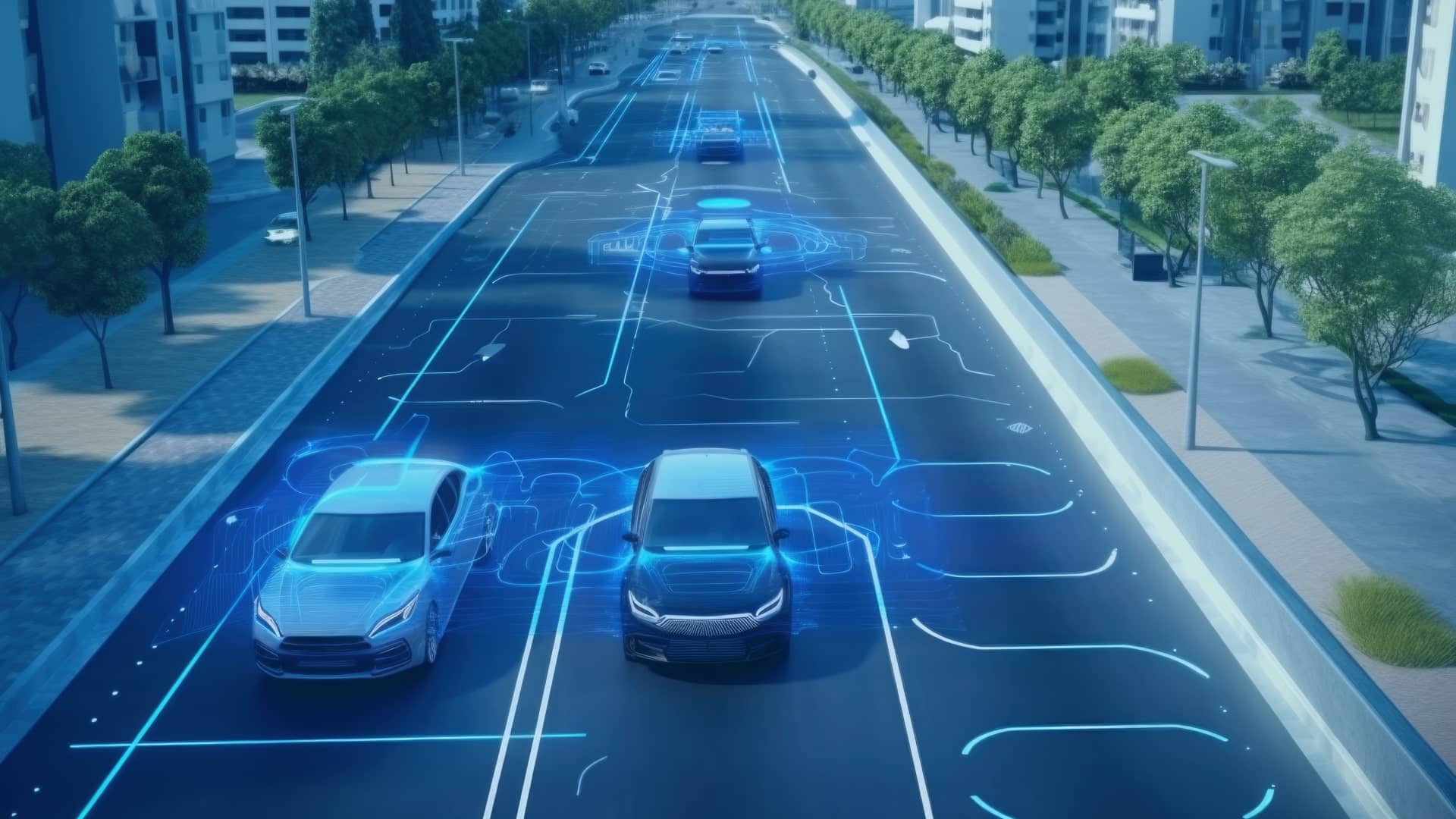Vehicle telematics is revolutionizing the way we think about driving, offering far more than the simple navigational assistance of traditional GPS. This technology integrates advanced GPS, onboard diagnostics, and cellular technology to provide real-time data on vehicle performance, location, and driver behavior. This introduction will walk you through the transition from GPS to advanced vehicle telematics. It will also set the stage for a deeper dive into its impact on modern driving.
The Fundamentals of Vehicle Telematics:
Vehicle telematics is a method of monitoring a vehicle. By combining a GPS with onboard diagnostics, it’s possible to record – and map – exactly where a vehicle is and how fast it’s traveling and cross-reference that with how a vehicle is behaving internally.
Components:
-
- GPS Technology: Provides precise location data for the vehicle.
- Onboard Diagnostics (OBD): Collects a vehicle’s operational data such as speed, engine temperature, and fuel consumption.
- Cellular Technology: Enables the transmission of data to a central database or system for analysis.
- Sensors and Additional Hardware: Various sensors can be installed in vehicles to monitor additional data points like tire pressure, cargo status, and more.
How It Works:
- Data Collection: Telematics systems collect data from various sensors and the vehicle’s OBD port. This data can include vehicle location, speed, idle time, harsh acceleration or braking, fuel consumption, vehicle faults, and more.
- Data Transmission: The collected data is transmitted via cellular networks to a central server. This transmission can occur in real-time or at defined intervals, depending on the system’s design and purpose.
- Data Analysis: Once the data is collected, it’s analyzed to provide insights. For fleets, this might involve analyzing routes, driver behavior, and vehicle health to improve safety and efficiency. For individual consumers, it might involve monitoring driving habits for insurance purposes or vehicle health for maintenance alerts.
- User Interface: The analyzed data is often made available to users through online dashboards, mobile apps, or reports. Users can see their vehicle’s status, receive maintenance alerts, track their fleet in real-time, or review long-term trends in driving habits.
Key Functions and Features:
- Location Tracking: At its most basic, telematics involves tracking the location of a vehicle or fleet of vehicles. This can be used for real-time tracking, historical tracking of routes, geofencing, and more.
- Driver Behavior Monitoring: Telematics can identify behaviors such as speeding, harsh braking, and rapid acceleration. This can be used for coaching drivers to improve safety and efficiency.
- Vehicle Health Monitoring: By reading data from the vehicle’s OBD system, telematics can provide early warnings about maintenance issues, predict when parts might fail, and provide reminders for routine maintenance.
- Fleet Management: For commercial users, telematics can offer a host of features to manage a fleet effectively. This includes route optimization, dispatching, and compliance with regulatory requirements.
Benefits:
- Improved Safety: By monitoring and addressing driving habits, telematics can significantly reduce the risk of accidents.
- Increased Efficiency: Route optimization and monitoring idle times can lead to reduced fuel consumption and better use of vehicles.
- Reduced Operational Costs: Preventive maintenance and improved fleet management lead to lower overall costs.
- Enhanced Customer Service: Real-time tracking allows companies to provide customers with accurate delivery times and updates.
Potential Challenges:
- Privacy Concerns: The collection of detailed location and behavior data raises privacy issues that must be addressed through clear policies and user agreements.
- Data Overload: The sheer volume of data collected can be overwhelming. Effective systems need to filter and present data in a way that’s useful and actionable.
- Integration with Existing Systems: For businesses, integrating telematics data with other systems like scheduling, billing, and customer service can be challenging.
Emerging Trends and Technologies: Explore how telematics will integrate with autonomous vehicles and smart city infrastructures. Paving the way for even more advanced applications. Whether you’re a fleet manager seeking to improve efficiency, a safety regulator looking to enforce driving laws, or a consumer interested in better understanding and maintaining your vehicle. As technology continues to advance, the capabilities and applications of vehicle telematics will only expand. It is making an increasingly integral part of the automotive world.
Advantages of Vehicle Telematics in Modern Driving:
- Enhanced Driver Safety: Discover how real-time monitoring and alerts can reduce the risk of accidents. Learn about systems that analyze driver behavior and provide feedback to promote safer driving habits.
- Fleet Management Efficiency: Understand how telematics can optimize routes, track vehicles, and monitor fuel consumption. Leading to significant cost savings and operational efficiency for fleet managers.
- Predictive Maintenance: Learn about the benefits of being able to detect potential vehicle issues before they lead to breakdowns. It reduces downtime and repair costs.
Real-World Applications and Case Studies:
- Case Studies of Telematics in Action: Read about real-world examples where telematics has made a significant impact on industries ranging from logistics to personal transportation.
- Consumer Applications: Find out how individual drivers are using telematics to gain insights into their driving habits, improve safety, and even lower insurance premiums.
Challenges and Considerations:
- Data Security and Privacy: Address common concerns about the collection and use of personal data. Understand the measures taken to ensure data security and user privacy.
- Implementation Hurdles: Discuss the technical and financial challenges of implementing telematics systems, and how businesses as well as consumers can overcome them.
The Future of Vehicle Telematics
Integration with Emerging Technologies:
- Autonomous Vehicles: Telematics will play a crucial role in the development and operation of autonomous vehicles. It will provide the necessary real-time data for navigation, traffic management, and system diagnostics. This ensures safe and efficient travel without human intervention.
- Electric Vehicles (EVs): As the shift towards electric vehicles accelerates, telematics will help manage charging stations, optimize battery life, and integrate with smart grid technologies to efficiently use energy resources.
- Smart City Infrastructure: Telematics will interact with smart city systems to improve traffic flow, reduce congestion, and provide critical data for urban planning. Vehicles will communicate with traffic lights, road sensors, and other infrastructure to create a more cohesive and efficient urban environment.
Enhanced Connectivity:
- Vehicle-to-Everything (V2X) Communication: Future telematics systems will enable vehicles to communicate not just with central servers but with each other and the surrounding infrastructure (V2I – Vehicle-to-Infrastructure). This will enhance safety, as vehicles will be able to warn each other about potential hazards and adjust their behavior to prevent accidents.
- 5G and Beyond: The rollout of 5G technology and future telecommunications standards will dramatically increase the speed and volume of data transmission. This allows for more sophisticated and real-time telematics applications, such as live HD video streaming for vehicle monitoring and instant response to changing road conditions.
Advanced-Data Analytics and AI:
- Predictive Analytics: Telematics will use advanced algorithms and machine learning to predict vehicle maintenance needs, traffic patterns, and even driver behavior. This will allow for more proactive and efficient decision-making.
- Personalization: AI will enable telematics systems to learn from individual driver patterns and preferences. This will lead to a more personalized driving experience. Systems could automatically adjust routes, vehicle settings, or even entertainment options based on the driver’s habits and current conditions.
User-Centric Services and Business Models:
- Usage-Based Insurance (UBI): Telematics is already impacting insurance by offering premiums based on actual driving behavior rather than statistical averages. In the future, this could extend to more nuanced policies that offer real-time, dynamic pricing based on current driving conditions, time of day, and other factors.
- Telematics as a Service (TaaS): Companies might offer telematics platforms directly to consumers as a subscription-based service, providing regular updates, advanced features, and customizable options without requiring the user to buy a new vehicle.
Regulatory and Ethical Considerations:
- Data Privacy and Security: As telematics systems become more integrated into daily life, ensuring the security and privacy of user data will become increasingly critical. This will likely involve new regulations and standards for data handling and protection.
- Ethical Use of Data: There will be ongoing discussions about the ethical use of telematics data. Especially as it pertains to tracking and monitoring individuals’ movements and behaviors. It balances safety and efficiency benefits with individual privacy rights will be a key challenge.
Conclusion
The future of vehicle telematics is bright and filled with potential. As technology continues to advance, the capabilities and applications of telematics will expand dramatically. They are fundamentally transforming the driving experience, vehicle management, and urban transportation systems. This evolution will not only lead to safer, more efficient roads but also open up new opportunities for innovation and services. Reshaping our relationship with transportation.



